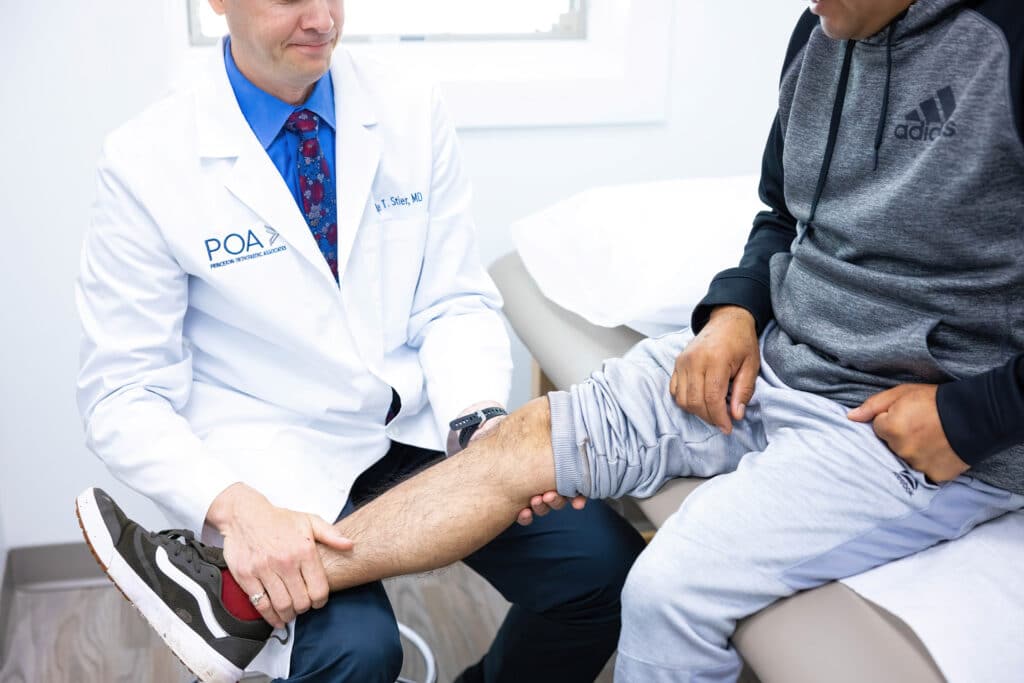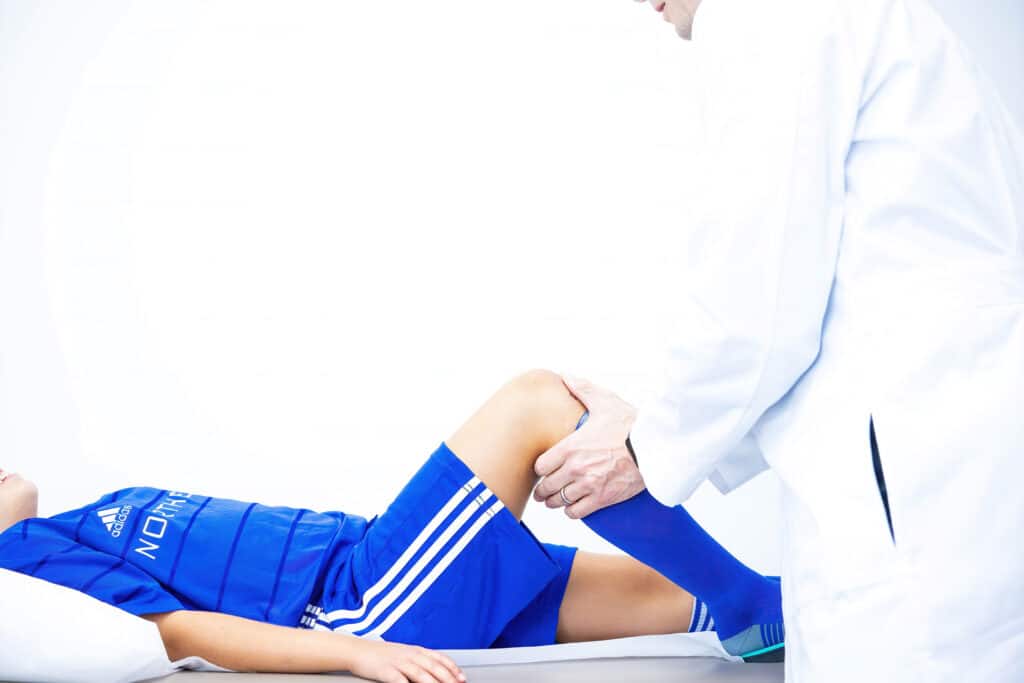
Physician Assistants
Physical & Occupational Therapists
KneeMRI ScansNon-OperativePhysiatry
Physical Therapy
Podiatry
Spine
Sports Medicine
TraumaUrgent Care
X-Ray Imaging

A hamstring injury is a tear in the muscle tissue of your thigh. These injuries are common to athletes and occur because tendons or large muscles have ripped. They can happen in varying degrees of severity. When a hamstring is strained or torn, the severity may be graded on a scale from 1 - 3, with no tear being the least severe and complete tearing – where there is actually an incision through the muscle tissue – being the most severe, scaling upwards. The recovery period depends on how badly one has been injured; it could take weeks to completely heal from a mild strain while it could still be an ongoing process after sustaining a serious muscle tear (grades 2 or 3).
A hamstring injury occurs when one or more of the muscles in this area are stretched beyond their normal limit. The severity varies from mild to serious, and a hamstring pull can range from a few days to several weeks recovery depending on the type of strain. Hamstring injuries are common and include strains, so keeping up with your exercise routine can help you prevent it from happening.
It could also occur gradually through slower movements such as those associated with jogging, walking or even running. If a person has previously sustained an injury to the same area, it is more likely for them to be injured again as their body may not have been given time to heal properly between bouts of repetitive strain.
The hamstrings are a group of three muscles located in the back of the thigh. They are the most common muscles injured in professional football and usually occur during the “push-off” phase of running. Several factors can predispose an athlete to injury, including older age, previous hamstring injury, less flexibility in the hamstrings, lack of hamstring strength, and fatigue. Such injuries are common in professional football players, as running is a key component of the position.



Injuries to these muscles are very common in sprinters, such as football or soccer players. A physical exam is often used to diagnose the injury. Patients may complain of pain in the back of their thigh and difficulty when kicking their legs backwards during running. They may also report a stabbing, cramping sensation in the back of their leg and may be unable to run as a result.
When examining these muscles one can often see swelling and bruising, signs that the muscle has been injured. In severe cases there may be a palpable defect in the muscle. The severity of the injury is graded on a scale from 1-3. Grade 1 injuries are mild, with only a few muscle fibers being torn and no loss in muscle strength. Grade 2 injuries are moderate injuries with a loss in hamstring strength. Grade 3 injuries are the most severe, representing a complete tear of the hamstrings and a loss in strength.
The majority of injuries to the hamstring muscle are partial thickness tears. In other words, only part of the muscle has been torn. These can most often be treated successfully with rest, ice, compression, elevation (also known as RICE), and taking nonsteroidal anti-inflammatory drugs (NSAIDs), such as ibuprofen. This will be done for the first week, followed by progressive functional physical therapy for three to four more weeks as needed.
Return to full activity is usually allowed when the patient is pain free, has full range of motion, and full strength. More severe injuries such as partial tears with significant loss of strength and complete tears lead to longer periods of rest with conservative management. Complete hamstring tears with retraction of the muscle can lead to significant functional impairment and lost playing time. In a study out of Duke University Medical Center, Forty-two percent of patients with these complete tears were unable to run or participate in sports requiring agility.
When a player has a hamstring injury, one common problem is that they don't use rehab properly. If the athlete doesn't continue to challenge their leg muscles during rehab, then the injury is more likely to occur again. The main cause for this is when an athlete does too much too soon. For example playing basketball or running before the muscle has healed properly and become strong again. This can lead to reinjury. He or she should also avoid climbing flights of stairs, hill walking or jogging up steep hills until they are told by their doctor that they have regained their strength. The doctors usually want to see that they can squat at least 100 pounds (45kg) and lunge on both legs without causing pain in the injured leg before they allow them to continue exercising at full intensity.

© 2023 Princeton Orthopaedic Associates. The contents of princetonorthopaedic.com are licensed under a Creative Commons Attribution-NonCommercial 4.0 International License. Copying without permission is strictly forbidden.